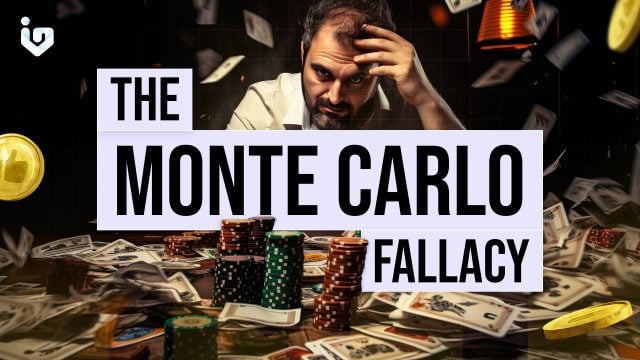Have you ever flipped a coin and got heads five times in a row? If so, you might have thought that the next flip was more likely to be tails, since it seemed unlikely to get six heads in a row. This is an example of the “Monte Carlo fallacy,” also known as the “gambler’s fallacy.” It is a common misconception that past events can affect the probability of future events in random processes.
Origins of the Monte Carlo Fallacy
The name of the fallacy comes from a famous incident that occurred in the Monte Carlo Casino in 1913. On that night, the roulette wheel landed on black 26 times in a row, which is extremely rare. Many gamblers lost huge amounts of money betting on red, thinking that it was due to come up. They assumed that the wheel had a memory and that it would balance out the previous results. However, they were wrong. The roulette wheel is a random device, and each spin is independent of the previous ones. The probability of landing on black or red is always the same, regardless of the past outcomes.
Going Deeper
The Monte Carlo fallacy is a type of cognitive bias that affects our perception of randomness and probability. We tend to look for patterns and order in chaotic events, and we often ignore the role of chance and variation. We also tend to overestimate the likelihood of rare events, especially if they have recently occurred or if they have some emotional significance. This can lead us to make irrational decisions and judgments, especially in situations involving risk and uncertainty.
Avoiding The Monte Carlo Fallacy
One way to avoid the Monte Carlo fallacy is to understand the concept of independence. Two events are independent if the occurrence of one does not affect the probability of the other. For example, flipping a coin is an independent event, because the outcome of each flip does not depend on the previous ones. The same is true for rolling a die, drawing a card, or spinning a roulette wheel. Each trial is a new and separate experiment, and the past results have no influence on the future ones.
Another way to avoid the Monte Carlo fallacy is to use statistics and mathematics to calculate the actual probabilities of events. For example, the probability of getting heads on a coin flip is 50%. This means that in the long run, if we flip a coin many times, we expect to get heads about half of the time. However, this does not mean that we will get exactly half heads and half tails in every sequence of flips. There will be some variation and randomness in the results, and sometimes we will get more heads or more tails than expected. This is normal and does not indicate any bias or anomaly in the coin or the process.
To illustrate this, let us consider the following question: What is the probability of getting six heads in a row on six coin flips? The answer is about 1.56%. This means that out of 64 sequences of six flips, we expect to get six heads in a row only once on average. However, this does not mean that it is impossible or extremely unlikely to get six heads in a row. It can happen, and it does not mean that the coin is unfair or that the next flip is more likely to be tails. It is just a rare and random occurrence that has no effect on the future flips.
To Summarize
The Monte Carlo fallacy is a common and tempting mistake that can have serious consequences in real life. It can affect our decisions in gambling, investing, sports, politics, medicine, and many other domains. It can make us lose money, waste time, miss opportunities, or take unnecessary risks. Therefore, it is important to be aware of this fallacy and to avoid it by using logic, reason, and evidence. Remember, the past does not predict the future, and random events are just that: random.

